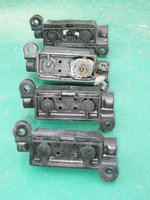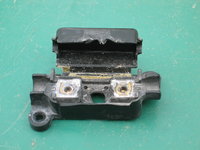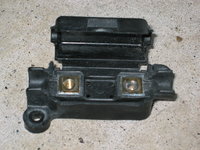For those of you who live in warmer climates, you probably use your air-conditioning quite regularly if not nearly year-round. And you are probably familiar with the 30A "strip" fuse in the blower motor circuit blowing every few years, with regular/hard usage.
Yesterday, my wife notified me that her A/C had abruptly stopped working in her 1995 E320 wagon. Finding this to be odd (given that I had replaced the blower motor and regulator just a few short years ago with new units), last night I popped the hood to inspect the first thing I always suspect when I get a complaint (or experience) the A/C on a 1980s or 1990s MB not working: the 30A strip fuse that is inline with the blower motor circuit.
Sure enough, by the light of a flashlight I found a burnt fuse. So, I got out a trusty Snap-On Philips screwdriver and replaced the fuse, which took all of about 3 minutes. Note: I maintain 8-10 extras on hand at any time of the 30A strip fuses. I did notice that one of the screws that holds one end of the fuse was slightly out of alignment, and took some extra work to get into the threads and cinched down. While I was at it, I took a small file and filed off the ends of the blower wires and also the brass connectors to which the fuse makes contact. This is to remove any oxidation or old fuse material, that deposits as a result of electricity flowing through the circuit over time, and builds up causing increased resistance in the fuse area.
I switched the car on to the ACC position with the hood up, and IMMEDIATELY saw sparks fly at the fuse holder and the fuse burnt IMMEDIATELY right through. Thinking this was odd, I replaced the fuse again and the same thing happened.
OK, so I knew I had a problem somewhere.
Waiting for my workday to end, and while I still had light out in the driveway, I resolved to go back out and diagnose the problem. It was quickly apparent: the $6.00 MB fuse holder had melted on one side, with the brass fuse contact plate melting right through the bottom of the holder and making contact with the metal base plate that attaches to the strut tower !! So this shorting was what was causing the sparks to fly, and the fuses to blow !!
I removed the fuse holder, and this is what I found:

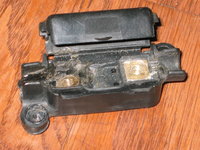
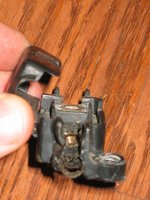


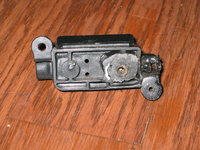
You can see that the actual plane of the connector is sunken down and angled away from the other connector. This is the original fuse holder as I scraped off some of the original engine cosmolene from the bottom of it after removing it.
The part number is 123 540 04 50 and the current MB list price is around $6.00.
I recommend that you CLOSELY inspect your fuse and holder by popping the cap and inspecting the condition of the fuse holder and fuse seating area.
Cheers,
Gerry
Yesterday, my wife notified me that her A/C had abruptly stopped working in her 1995 E320 wagon. Finding this to be odd (given that I had replaced the blower motor and regulator just a few short years ago with new units), last night I popped the hood to inspect the first thing I always suspect when I get a complaint (or experience) the A/C on a 1980s or 1990s MB not working: the 30A strip fuse that is inline with the blower motor circuit.
Sure enough, by the light of a flashlight I found a burnt fuse. So, I got out a trusty Snap-On Philips screwdriver and replaced the fuse, which took all of about 3 minutes. Note: I maintain 8-10 extras on hand at any time of the 30A strip fuses. I did notice that one of the screws that holds one end of the fuse was slightly out of alignment, and took some extra work to get into the threads and cinched down. While I was at it, I took a small file and filed off the ends of the blower wires and also the brass connectors to which the fuse makes contact. This is to remove any oxidation or old fuse material, that deposits as a result of electricity flowing through the circuit over time, and builds up causing increased resistance in the fuse area.
I switched the car on to the ACC position with the hood up, and IMMEDIATELY saw sparks fly at the fuse holder and the fuse burnt IMMEDIATELY right through. Thinking this was odd, I replaced the fuse again and the same thing happened.
OK, so I knew I had a problem somewhere.
Waiting for my workday to end, and while I still had light out in the driveway, I resolved to go back out and diagnose the problem. It was quickly apparent: the $6.00 MB fuse holder had melted on one side, with the brass fuse contact plate melting right through the bottom of the holder and making contact with the metal base plate that attaches to the strut tower !! So this shorting was what was causing the sparks to fly, and the fuses to blow !!
I removed the fuse holder, and this is what I found:






You can see that the actual plane of the connector is sunken down and angled away from the other connector. This is the original fuse holder as I scraped off some of the original engine cosmolene from the bottom of it after removing it.
The part number is 123 540 04 50 and the current MB list price is around $6.00.
I recommend that you CLOSELY inspect your fuse and holder by popping the cap and inspecting the condition of the fuse holder and fuse seating area.
Cheers,
Gerry



